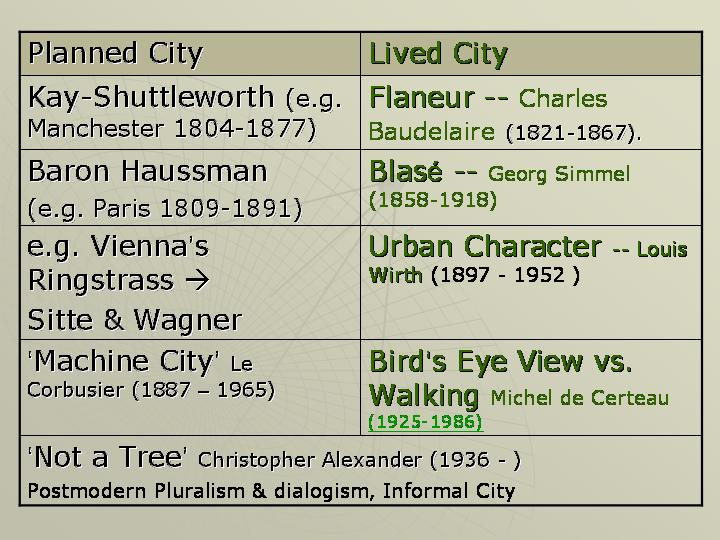This take-home exam aims to help you further recollect and interact with what you have learned.
Postmodern City Texts: Toronto and Taipei as Examples
2004 Spring
Final Exam: Part II
II. General Essay Questions:
1. Lived City: Urbanism.
Urbanism, Louis Wirth claims, is a way of life which is characterized
by efficiency,
heterogeniety on the one hand, and anonymity, segmentation, as well as
superficial and
transitory personal relations (or a shift away from primary relationships
to secondary relationships)
on the other.
Do you agree? Use two of the texts we have discussed in class to illustrate
your points.
2. Lived City: Spaces of Flows and Chance Encounter.
Choose two short texts or one long text to analyze their treatments
of flows and
the spaces of flows. How do the city texts we have read present the rapid
flows (of people,
commodities, information, virus, capital, etc.), the spaces (streets,
subway station, department
stores, restaurants, hotels, strip bar, concert hall, empty apartment
building and homes)
where these flows happen, and the ways people are related to each other?
* Whether you choose one text or two, make sure that you discuss more
than
one kind of human relationships in the space of flows.
3. Lived City: People on the Margins
How do the Taipei texts and the Toronto counterparts imagine and present
the people
on the margins? What are the similarities and differences in their choices
and views of the
'margins'? Are the differences those in nature or in degree? In other
words, are
there ways to connect Toronto and Taipei in the issues of laborers, immigrants,
homosexuals, or the homeless? Use at least two texts as examples
in your comparison
and contrast of the margins of the two cities.
4. Concept City:

How do urban planners and theorists design or look at urban spaces and
city dwellers in order to
construct a city's identity?
Discuss one of the views listed above and use one example of your own
choice to support
or critique this view.
5. History: How do postmodern city texts deal with history? By
cutting and mixing different "stories"
or various signs of the past? Or by showing an interaction between the
past and the present?
Either choose two fictional texts from our class, or one fictional text
from class and one spatial text
(a place or an architecture) of your own choice to analyze.
6. Reading city texts: choose one group report or one free-choice
journal done by your classmates
to comment on. Please analyze the methods and texts used in this reading
of a city,
and then either support it with some of your own examples, or provide
another perspective
this report did not consider.